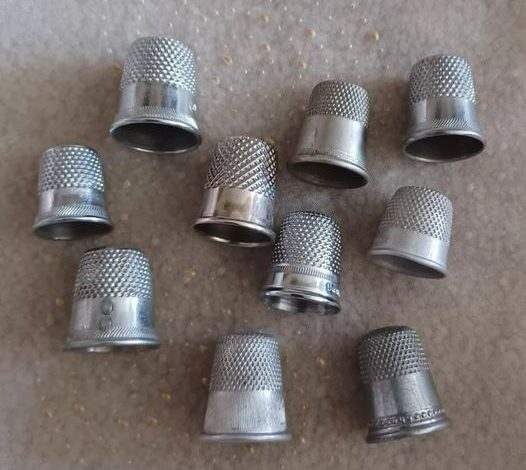A Captivating Odyssey Through the History of Thimbles

The humble thimble, a seemingly insignificant object, boasts a rich and fascinating history that spans millennia. Originally conceived as a safeguard for delicate fingers during the arduous task of sewing, this small but mighty tool has undergone a remarkable evolution, leaving an indelible mark on human culture and craftsmanship.
ADVERTISEMENT
From Ancient Origins to Modern Marvels
ADVERTISEMENT
The earliest known thimbles, unearthed from the ancient city of Pompeii, date back to the 1st century AD, offering a glimpse into the tool’s ancient origins. These bronze artifacts served as the foundational blueprint for a device that would endure the test of time, adapting to the evolving needs and aesthetics of successive generations.
ADVERTISEMENT

A Tapestry of Materials and Designs
Throughout history, thimbles have showcased an incredible diversity of materials and designs, reflecting the ingenuity and resourcefulness of their creators. From the early adoption of leather and wood to the subsequent embrace of metals like brass, silver, and gold, thimbles have mirrored the changing tastes and technological advancements of each era. The 14th-century city of Nuremberg, Germany, emerged as a preeminent center for brass thimble production, solidifying its reputation as a hub of craftsmanship and innovation.
Beyond the Sewing Seam: Thimbles in Diverse Roles
While primarily associated with needlework, thimbles have proven to be versatile tools with applications extending far beyond the realm of sewing. Bookbinders, leatherworkers, and lacemakers, among others, discovered the invaluable protection and precision offered by these diminutive implements. Thimbles have even left their mark on popular culture, finding a place in beloved stories like “Peter Pan” and iconic games like Monopoly, underscoring their ubiquitous presence in everyday life.
Treasure Troves and Cultural Celebrations
Today, vintage thimbles are cherished by collectors and enthusiasts worldwide, who appreciate their historical significance, aesthetic appeal, and intricate craftsmanship. These miniature artifacts serve as tangible connections to bygone eras, offering a window into the lives and customs of past generations. Porcelain, bone china, and sterling silver thimbles are particularly coveted for their elegance and rarity.
Museums and exhibitions dedicated to celebrating the thimble’s legacy have sprung up around the globe. The Fingerhut Museum in Creglingen, Germany, houses an impressive collection showcasing the diversity of thimble design and production across centuries. These cultural institutions serve as vital repositories of knowledge and inspiration, preserving the rich heritage of this often-overlooked object.
A Timeless Endeavor
In the contemporary world, thimbles continue to captivate the imagination of artisans and crafters, who find both utility and inspiration in their timeless form. Modern thimble makers skillfully blend traditional techniques with contemporary aesthetics, creating pieces that honor the past while resonating with the present.
Ultimately, the thimble’s enduring appeal lies in its ability to transcend time and culture. More than just a functional tool, it stands as a testament to human ingenuity, craftsmanship, and the enduring power of objects to connect us to our shared history.




